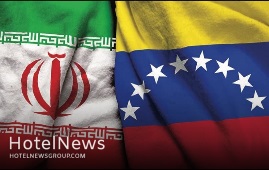
Venezuelan Tourism and Foreign Trade Minister Felix Ramon Plasencia Gonzalez will visit Iran in the next few days to discuss tourism cooperation, Caracas’ Ambassador to Tehran Carlos Antonio Alcala Cordones has said. “Felix Plasencia is going to visit Iran next week to sign a Memorandum of Understanding on expansion of tourism cooperation with the Islamic Republic,” IRNA quoted the envoy as saying on Wednesday. The Venezuelan ambassador made the remarks on Wednesday night in a meeting with Iran’s Cultural Heritage, Tourism and Handicrafts Minister Ali-Asghar Mounesan, noting that Plasencia’s visit is aimed at paving the way for more collaboration in the tourism industry. The ambassador also noted that he has been in Iran for two years and it is obvious that a short visit by the Venezuelan minister will not give him enough time to get acquainted with the history and tourist attractions of the country, the report said. Cordones underlined that joint venture in the tourism industry will bolster ties between Iran and Venezuela and help the two countries’ economies. He further noted that Plasencia intends to offer a pavilion to Iran at the International Tourism Fair of Venezuela. For his part, Mounesan said that during a webinar with former Venezuelan tourism minister, both sides decided to expand tourism ties and hold an introductory tour. The Iranian minister added that the two countries are going to sign an MoU to expand cooperation in the tourism industry and that tourism practitioners from Venezuela and Iran will hold talks for future cooperation. The Ministry of Cultural Heritage, Tourism and Handicrafts has determined a five-day trip for the Venezuelan delegation, but it seems that they are going to stay less time in Iran, he noted. The relationship between Venezuela and Iran became more serious following an official visit by the then Venezuelan President Hugo Chavez to Tehran in 2001. Now, the two nations are determined to expand cooperation in tourism, the news agency explained. According to previous agreements, Venezuelan and Iranian nationals can have visa-free travels to each others' countries to stay for two weeks. The visit by the Venezuelan minister is expected to pave the ground for expansion of cooperation in cultural, economic, and political fields as well. Last November, Mounesan said that visa-free access and direct flights are the two important advantages for Iran and Venezuela to develop tourism cooperation. “We are ready to expand our relations with Venezuela in the arena of tourism by organizing familiarization tours in both countries with the participation of the private sector,” Mounesan said in a meeting with the Venezuelan ambassador. Back in October, Mounesan exchanged views with Plasencia, in a video conference to deepen tourism relations, especially through simplifying visa rules, launching fam tours, and setting up exhibits. They also agreed to sign a memorandum of understanding in a bid to broaden bilateral ties. Iran expects to reap a bonanza from its numerous tourist spots such as bazaars, museums, mosques, bridges, bathhouses, madrasas, mausoleums, churches, towers, and mansions, of which 24 being inscribed on the UNESCO World Heritage list. Under the 2025 Tourism Vision Plan, it aims to increase the number of tourist arrivals from 4.8 million in 2014 to 20 million in 2025. So it will undeniably try its best to achieve a relatively ambitious goal but when that happens the travel industry is likely to look more altered.
Create: Feb 20, 2021 Edit: Feb 20, 2021 Regional News
A joint technical committee for tourism cooperation between Iran and Turkey has recently formulated a plan which reportedly could pave the way for bilateral passport-free travels. The proposal is to be discussed in detail by the tourism authorities of the two countries, ISNA reported on Monday. Turkey was among the top ten countries with the most arrivals in Iran during the [Iranian calendar] year 1398 [Mar. 2019 – Mar. 2020], according to data compiled by Iran’s Ministry of Cultural Heritage, Tourism and Handicrafts. Some Iranian travel experts emphasize the need to attain a balance in tourist flow rates between the two nations, saying the Islamic Republic should reach a balance with Turkey in the movement of tourist flow. Last year, Iranian travel agencies introduced a plan to offer stimulus packages and hold familiarization tours for Turkish agencies, tour operators, journalists, and influencers in a bid to attract more travelers from the neighboring country. “Iran will be organizing familiarization tours for about 100 Turkish tourism agencies after the [complete] reopening of joint borders and resuming [mutual] tourist relations,” according to Mehdi Rezaei, the secretary of the Turkey consortium at the Association of Iranian Travel Agents. “Fam tours had been planned for Turkish [travel] agencies and media for a period before the virus pandemic. Unfortunately, at the outset of the outbreak, the tours were postponed to another time when mutual travels are resumed.” “We must go to the heart of Turkey and introduce our country to them. In Iran, there are places that Turks wish to visit, such as the shrines in Neyshabour and Kashan. Many Turks are familiar with Iranian literature and poets, and Hafez’s poems are etched in the memory of many of them. We must develop these capacities.” The spread of the novel coronavirus has plunged the travel and tourism industry and economy in the global scene over the past couple of months as passenger traffic on airlines and hotel occupancy rates have fallen off a cliff compared to the same periods in previous years.
Create: Feb 17, 2021 Edit: Feb 17, 2021 Regional News
Wyndham Hotels & Resorts (NYSE: WH) today announced results for the three months and year ended December 31, 2020. Highlights include: Diluted loss per share for the quarter was $0.08 and adjusted diluted earnings per share was $0.07; diluted loss per share for the full-year was $1.42 and adjusted diluted earnings per share was $1.03. Net loss for the quarter was $7 million and adjusted net income was $7 million; net loss for the full-year was $132 million and adjusted net income was $96 million. Adjusted EBITDA was $56 million for the quarter and $327 million for the full-year. Global comparable RevPAR for the quarter declined 33% year-over-year; global comparable RevPAR for the year declined 35% year-over-year. System-wide rooms declined 4% year-over-year. Net cash provided by operating activities for the full-year was $67 million and free cash flow was $34 million. Paid quarterly cash dividend of $0.08 per share in fourth quarter, and Board of Directors recently authorized a 100% increase in the quarterly cash dividend to $0.16 per share beginning with the dividend expected to be declared in first quarter 2021. Repaid all remaining revolver credit facility borrowings. “We generated strong adjusted EBITDA and free cash flow in the worst year our industry has ever experienced. At the same time, we strengthened our portfolio with the completion of our strategic termination plan and drove sequential growth in hotel openings and our development pipeline,” said Geoffrey A. Ballotti, president and chief executive officer. “Our non-urban, drive-to economy and midscale hotels, combined with our ongoing investment in sales and marketing, captured rising pent-up leisure travel demand, which continued to produce sequential RevPAR improvements and domestic market share gains for our franchisees over the course of 2020.” Fourth Quarter 2020 Operating Results Revenues declined from $492 million in the fourth quarter of 2019 to $296 million in the fourth quarter of 2020. The decline includes lower pass-through cost-reimbursement revenues of $70 million, which have no impact on adjusted EBITDA, in the Company’s hotel management business. Excluding cost-reimbursement revenues, revenues declined $126 million primarily reflecting a 33% decline in comparable RevPAR and the impact from hotels temporarily closed due to COVID-19, as well as a $15 million decline in license and other fees also reflecting the impact of COVID-19 on travel demand globally. The Company generated a net loss of $7 million, or $0.08 per diluted share, compared to net income of $64 million, or $0.68 per diluted share, in the fourth quarter of 2019. The decrease of $71 million, or $0.76 per diluted share, was primarily due to the RevPAR and license fee declines, as well as excess marketing fund spend, which were partially offset by cost containment initiatives, lower volume-related expenses and the absence of transaction-related expenses. Full reconciliations of GAAP results to the Company’s non-GAAP adjusted measures for all reported periods appear in the tables to this press release. Full-Year 2020 Operating Results Revenues declined from $2,053 million in 2019 to $1,300 million in 2020. The decline includes lower pass-through cost-reimbursement revenues of $273 million, which have no impact on adjusted EBITDA, in the Company’s hotel management business. Excluding cost-reimbursement revenues, revenues declined $480 million primarily reflecting a 35% decline in comparable RevPAR and the impact from hotels temporarily closed due to COVID-19, as well as a $47 million decline in license and other fees also reflecting the impact of COVID-19 on travel demand globally. The Company generated a net loss of $132 million, or $1.42 per diluted share, in 2020 compared to net income of $157 million, or $1.62 per diluted share, in 2019. The decline of $289 million, or $3.04 per diluted share, was primarily due to the revenue decline, impact of the non-cash impairment charges and excess marketing fund spend, which were partially offset by cost containment initiatives, lower volume-related, separation-related and transaction-related expenses and the absence of contract termination expenses. Full reconciliations of GAAP results to the Company’s non-GAAP adjusted measures for all reported periods appear in the tables to this press release.
Create: Feb 13, 2021 Edit: Feb 13, 2021 International News
Fans of SpongeBob SquarePants, Dora the Explorer, Teenage Mutant Ninja Turtles and PAW Patrol get ready: Karisma Hotels & Resorts is opening Nickelodeon Hotels & Resorts Riviera Maya in June 2021. Beginning today, travelers can book accommodations at Mexico’s first Nickelodeon Resort, featuring one of the largest water attractions in Mexico and all ocean-front swim-up suites, accommodating families of five, for the ultimate family beach escape. Now, families can enjoy a premium vacation experience themed to Nickelodeon’s most beloved and imagination-expanding worlds, with something for everyone. All Oceanfront, Swim-up Suites Designed for FamiliesNickelodeon Hotels & Resorts Riviera Maya will feature 280 oceanfront swim-up suites, incorporating family-friendly amenities such as two bathrooms in every suite and plenty of space for a family of five, as well as playful design elements including art pieces pulled from beloved show archives and furnishings inspired by Nickelodeon’s iconic colors and current and past characters, such as Teenage Mutant Ninja Turtles, SpongeBob SquarePants and Dora the Explorer. In addition, the property will feature four rooftop, penthouse-style Signature Suites, including the fan-favorite Pineapple Suite and the first-ever Turtle Lair Suite, dedicated to the Teenage Mutant Ninja Turtles. “After the huge success of the Nickelodeon Hotels & Resorts Punta Cana, we could not be better poised to expand the brand experience with our resort with all oceanfront swim-up suites, along with themed experiences with an extended cast of 20 your favorite Nickelodeon characters,” said Mario Mathieu, Senior Vice President of Business Development, Design and Construction of Karisma Hotels & Resorts. “This property features many firsts such as the new Turtle Lair Suite, even more dedicated entertainment spaces such as SNICK Lounge and Mainstage, and the one-of-a-kind Aqua Nick® with its epic slides, river rides and the teen-friendly Soak Summit, which will be a destination in itself.” Aqua Nick®: Fun in the Water like You’ve Never Seen BeforeAt the epicenter of the resort’s entertainment offerings is Aqua Nick®, a six-acre themed water park featuring 2,000 sq. ft. of slides and more than 1,820 sq. ft of river rides, including a Lazy River and a faster-paced Adventure River, with complimentary and early access offered to guests. Park amenities also include the relaxing Bikini Bottom Beach, a Slime Spot, PAW Patrol Adventure Bay, an interactive water playground, and Soak Summit with 10 spine-tingling single and double-rider slides, including a multi-lane racing format. Because Aqua Nick® is conveniently adjacent to the resort, guests can still enjoy uninterrupted ocean views from their suites and seek out relaxing or high-energy spaces as they desire. Nickelodeon Place™: Character Experiences and Entertainment for All AgesNickelodeon Place™ will feature signature Nickelodeon characters such as SpongeBob SquarePants, Teenage Mutant Ninja Turtles, Blue from Blue’s Clues & You and more. Within Nickelodeon Place™ is Club Nick, the ultimate free play zone for kids complete with special themed days, a craft laboratory, playground, stage, surprise visits by Nickelodeon™ characters and even Slime!; along with immersive entertainment experiences. Guests can also pay homage to the iconic Big Orange Couch at SNICK Lounge, a sophisticated ‘90s-inspired space that serves as a game room, sports lounge and live music venue Nickelodeon Fun with World-Class Gourmet Inclusive® ExperiencesWith Karisma’s industry-leading World-Class Gourmet Inclusive® Experience, guests will have access to 24-hour in-room dining as well as world-class food and beverages served at six distinct restaurants for every taste. Adult time is also elevated, with sommeliers and expert mixologists crafting drinks at three bars, including The Bikini Bottom Bar and two swim-up bars. Other standout resort amenities include a state-of-the-art fitness center and a spa featuring kids’ treatments, couple’s suites, a luxurious bridal suite and outdoor treatment areas. Grupo Lomas Leadership to Bring Beloved Brands and Family Fun to Mexico“This year Grupo Lomas celebrates its 40th anniversary, and what better way to celebrate it than with the opening of this property that reaffirms our commitment to Mexico and continues to generate investment and jobs by betting on the most innovative accommodation concepts worldwide that contribute to strengthen the leadership of the Mexican Caribbean,” said Dolores López Lira, Chairman of the Board of Directors of Grupo Lomas. The tourism corporation’s investment in Nickelodeon Hotels & Resorts Riviera Maya will add nearly 2,000 luxury suites to its portfolio under the operation of Karisma Hotels & Resorts. “We are delighted to continue our successful partnership with Grupo Lomas and Karisma Hotels & Resorts to open this incredible resort along a stunning stretch of white sand beach, providing guests of all ages with an authentic vacation experience centered on five-star luxury, playfulness and the warm hospitality that makes Mexico such a beloved destination,” said Kevin Suh, President of Themed Entertainment at ViacomCBS. “With Viacom Global Insights reporting that 70% of kids find family time one of the most important sources of happiness, we’re excited to offer a fun destination that gives them a world-class family experience they won’t ever forget.” Nickelodeon Hotels & Resorts is being brought to Riviera Maya by hospitality trailblazers Grupo Lomas, which has introduced guests to an authentic Mexican experience for decades with an impressive collection of resorts such as the award-winning El Dorado Spa Resorts as well as game-changing local investments such as a 70,000 sq. ft. community greenhouse.
Create: Feb 11, 2021 Edit: Feb 11, 2021 International News
Two acclaimed African American developers – Victor MacFarlane of MacFarlane Partners and R. Donahue Peebles of The Peebles Corporation – are doubling-down on their multi-million-dollar effort to bring thousands of new jobs and economic benefits to the nation’s second-largest city as development partners of Angels Landing, their $2 billion twin-tower luxury hotel project in downtown L.A.’s Bunker Hill neighborhood. MacFarlane and Peebles are majority-owner principals of Angels Landing Partners, LLC, the development partnership responsible for conceiving, designing, building, and operating Angels Landing. The partnership was officially selected by L.A. City officials at the conclusion of the city’s competitive bid process in 2017. Their partnership’s intentions are firmly focused on completing construction of Angels Landing before elite athletes, sports officials and tourists worldwide converge in L.A. for the 2028 Olympic Summer Games. Victor B. MacFarlane, chairman and CEO, MacFarlane Partners said, “Angels Landing aligns well with many of the projects we have built in the past 30 years throughout the U.S., including two residential developments recently completed near Pershing Square.” “The foundation of our business has always been to strengthen communities where we do business,” Mr. MacFarlane said. “We believe we can help communities prosper. We know Angels Landing will have a significant positive impact on L.A.’s economy. The ripple effect of Angels Landing’s substantial economic and employment activity will reverberate throughout L.A. County by providing good-paying union jobs to construct our hotel project and extensive career opportunities when the project is completed, and its hotels are open to the public. We have spent more than $10 million to move our project forward. We’re not letting the coronavirus pandemic slow us down. We anticipate our project entitlement this year,” he added. Angels Landing is comprised of two towers, each anchored by its own five-star hotel. In addition to the hotels, the development will feature an expansive modern urban park – known as Angels Landing Plaza – designed to serve as a pedestrian-centered, transit-adjacent, open space environment in the heart of downtown L.A. R. Donahue Peebles, Chairman and CEO, The Peebles Corporation said, “Equity and inclusion are bedrock principles at the Peebles Corporation. My success is predicated on opportunities I received because of those two important tenets. I have built an impressive collection of commercial and residential projects in New York, Washington, D.C., Miami, and other U.S. cities.” “In each city, I’ve been most excited about using my influence to empower Black-owned, Latino-owned, and women-owned business leaders. My company works diligently to help minority-owned enterprises grow their businesses through procurement contracts established through our development projects,” Mr. Peebles said. According to an analysis prepared by BJH Advisors, LLC., more than 8,300 new jobs will be created during Angels Landing’s project design and construction. The New York City-based firm’s report estimates Angels Landing would additionally create more than 800 permanent jobs in downtown L.A. An estimated 500 jobs would be created by vendors in the L.A. County region providing good and services to the two luxury hotels. In addition to new job creation, the BJH Advisors analysis projects Angels Landing would give L.A.’s local economy a $1.6 billion boost and contribute $731 million to local worker’s earnings during its construction. The project would generate as estimated 12 million in recurring tax revenues and $2.4 million annually in local property tax revenues, according to the report. “With Angels Landing, the transformative impact of empowerment and economic inclusion will be felt by an array of businesses, including Latino- and Asian-owned businesses. We have committed to a goal of 30% M/WBE contracting across the board for our project. We’re raising the bar for economic inclusion for development projects in Los Angeles,” Mr. Peebles added. Angels Landing Plaza will frame the angular, multi-level Bunker Hill site as a publicly accessible, privately managed park amenity, establishing it as a vibrant, inviting, and treasured locale for L.A.’s downtown neighborhood residents, weekday commuters, nightlife seekers, tourists, and hotel guests. L.A.’s historic Angel’s Flight funicular will operate on its hillside-climbing route contiguous to the Angels Landing development. “With our commitment to Angels Landing, we are committing to the future of downtown Los Angeles. Despite the millions of dollars expended so far to keep our project on-track, and notwithstanding the strong pandemic-induced recessionary pressures on L.A.’s economy, we continue to push hard to make our plans for Angels Landing a reality. Having recently completed our Park Fifth apartment complex, a two-building development adjacent to Pershing Square, Angels Landing represents our continued faith in the economic future of downtown Los Angeles,” Mr. MacFarlane said. Mr. Peebles said, “2020 was a trying year for nearly every sector in the business world. And the first three quarters of 2021 may be equally challenging. But we’ve faced big challenges in the past and always managed to prevail. The success of our development businesses is a testament to our drive and commitment to build projects that improve the quality of life in the communities where they’re built.” Mr. MacFarlane said, “The economic impact of the coronavirus pandemic has been significant this year. Some of those negative economic impacts, such as lagging job growth, are projected to extend well into 2021. But pessimistic economic indicators and projections have not shaken our resolve to build Angels Landing. We’re making our investment to create new jobs for L.A. area residents. We’re confident Angels Landing will help the L.A. economy rebound and gain strength. Angels Landing will create thousands of jobs that will result in millions of dollars circulating throughout the L.A. region providing a needed boost to small businesses.”
Create: Feb 11, 2021 Edit: Feb 11, 2021 International News
The challenges the hospitality industry has faced in the wake of COVID-19 reminds us how critical the housekeeping department’s role is to a hotel’s overall success. The urgency to prevent the spread of COVID-19 has accelerated change in our industry, including the need for new hygiene and cleaning processes. Even before the virus, 78% of hotel guests believed cleanliness to be the most crucial factor affecting their choice of where to stay, with hotel cleaning protocols moving up to the #1 top-ranked category for travel with COVID-19. As guests expect the highest standards of sanitation to feel at ease in a hotel and once again return to travel, operators worldwide need to work with their housekeeping teams to better prepare for the impacts of these new realities. By using this time to further analyze housekeeping practices, hotel leaders have an opportunity to take advantage of advancing technologies to more accurately plan for operational shifts that, at the end of the day, influence bottom-line results. Here are a few ways hoteliers can prepare their housekeeping team for success in 2021. 1. Create a Structured Cleaning Program Using Industry Best PracticesTo earn guest confidence, hotels will have to demonstrate that they provide a clean and safe environment and are following specific disinfecting protocols. As part of this new dynamic, the ability to develop and implement proven strategies to meet these new cleanliness standards will be critical to staying ahead of the competition. This is a good opportunity to establish clear step-by-step standard operating procedures (SOPs) for the protocols needed to enhance cleaning regimens. Creating a distinct checklist for each area of the property, including the lobby, restrooms, common areas, fitness center, and guest rooms, will help to ensure nothing gets missed. Hotels can look to their brand or management company for guidance on a structured program, or they can leverage one from trusted industry organizations like the AHLA’s Safe Stay program or Amadeus’ disinfecting housekeeping checklist, endorsed by the International Executive Housekeeping Association (IEHA). 2. Alter Schedules for Guest Room Cleaning Based on NeedMany hotels are shifting away from daily cleaning with automatic opt-out cleaning programs, leading to, in some cases, dirtier rooms upon departure. At the same time, the enforcement of new hygiene protocols, including the expansion of high touchpoints and frequency of cleaning, can increase the amount of time needed to spend in a room. Updated practices on the use of disinfectants and surface dwell times can additionally alter the flow in which rooms are serviced. So, what does this mean for housekeeping and operational teams? The rise in guestroom cleaning times can make forecasting labor and servicing pop-up requests a more complex endeavor. Lack of planning for additional time can also cause strain on staff, while last minute modifications to departure room schedules can impact room readiness. By tracking and analyzing the labor and resources needed to execute the tasks these rooms now require, hotels can adjust to new cleaning schedules, while identifying valuable areas for improvement that will ultimately increase both staff and guest satisfaction. 3. Monitor How Many Hours Guest Rooms are VacantAs new guidance is issued for businesses to mitigate the risk of COVID-19, the procedures within hotels also need to adapt. For instance, the American Hotel & Lodging Association (AHLA) recommends rooms be left vacant for 24-72 hours prior to or after cleaning if possible, while China requires hotels that host international guests to change linens and clean guestrooms and bathrooms daily. Consumers are increasingly calculating risks associated with travel and want to have complete transparency when it comes to COVID-19-specific protocols before even booking a hotel room. The ability to promise, then track and report the number of hours a room is vacant is a must in today’s business environment. 4. Understand Which Rooms are Not Being Serviced and WhyStreamlining productivity may mean having to leave rooms not serviced for the day. Although a part of daily housekeeping, one of the biggest challenges is measuring why a room was not serviced, or “dropped”. Perhaps there is a need to alter opt-out programs. Perhaps there is a need for more staff. Having the ability to identify, record, and flag rooms with a special service status like “dropped rooms” allows teams to truly understand why rooms are not being serviced. This process allows housekeeping managers to schedule staff effectively, as well as audit and reconcile room counts at the end of each day to optimize operations. With today’s lack of time and budget, gaining important insights into dropped rooms is pivotal to every housekeeping team’s success. 5. Leverage Automation to Drive ProductivityAs we evaluate new ways to face the challenges ahead, hotel leaders must consider how innovation can play a critical role in closing the gaps between team capabilities and achieving business goals. The right hotel technology can be a powerful tool in the decision-making process by reaching across the hotel’s ecosystem to orchestrate proactive tasks such as automating room assignments, schedule turnovers, and reprioritizing work. Gaining valuable insights from automation dashboards and reporting tools can also enable better decision making in a world of unknowns. Whether it’s wiping down frequently used areas like elevator buttons, delivering guest requests like soap or chargers, or managing dropped or vacant rooms, modernizing processes with a housekeeping solution can help to maximize operational capabilities while ensuring the highest standards are met. During times of unpredictability, the ability to intelligently automate the prioritization, communication, and dispatching of the entire housekeeping operation is more valuable than ever. This way, limited time and budget is spent where it is needed most. Resetting for 2021 and BeyondMoving forward, there will be no greater focus from a guest’s perspective than a hotel’s commitment to its cleaning initiatives. Resetting for success in 2021 and beyond means understanding how technology can significantly enhance our capabilities as individuals and designing new business procedures that support it. Reflecting this dynamic presents an opportunity to lead the way in delivering the processes needed to support both housekeeping teams and guest confidence in this new era of hospitality.
Create: Feb 9, 2021 Edit: Feb 9, 2021 Housekeeping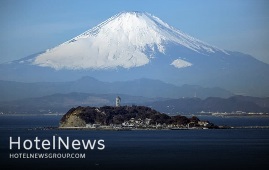
Japan's travel surplus in 2020 shrank to nearly one-fifth of the previous year, the first drop since the balance turned into the black in 2015, as international travel bans amid the coronavirus pandemic had a huge impact on the number of inbound visitors, government data showed Monday. The travel balance, which reflects the amount of money foreign visitors spend in Japan versus Japanese spending abroad, tumbled 79.2 percent to 562.1 billion yen ($5.3 billion) from a record 2.70 trillion yen in 2019 since annual comparable data became available in 1996, the Finance Ministry said in a preliminary report. Still, Japan's travel balance in 2020 logged black ink for the sixth straight year. In 2015, the balance saw its first black ink of 1.09 trillion yen since data compilation began in 1996, following a 44.4 billion yen deficit marked in 2014. Since 2011, when a massive earthquake, tsunami and the subsequent Fukushima nuclear crisis in northeastern Japan helped slightly widen a travel deficit to 1.30 trillion yen, the country's annual travel balance had continued to improve until 2019 with a steady increase in the number of foreign visitors. The reporting year's surplus in the current account, one of the widest gauges of international trade, fell 13.8 percent from 2019 to 17.70 trillion yen, its lowest level since 16.52 trillion yen recorded in 2015. It had increased 5.8 percent the previous year. In 2020, the goods trade balance saw a surplus for the fifth consecutive year, jumping almost eight-fold from the previous year to 3.05 trillion yen. The impact of a 15.0 percent decline in imports due to falls in prices of crude oil and other energy resources surpassed that of an 11.4 percent slip in exports amid sluggish demand for Japanese products such as cars and auto parts due to the pandemic. With the poor performance of the travel balance, services trade, which also includes cargo shipping, marked a 3.54 trillion yen deficit, following the first-ever surplus of 124.8 billion yen in 2019. It was the biggest red ink since the 3.81 trillion yen logged in 2012. The primary income balance, which reflects returns on overseas investments, showed a surplus of 20.72 trillion yen, the fourth largest since 1996, despite a 3.2 percent dip from a record 21.40 trillion yen in 2019, the first decline in four years. Many countries have imposed sweeping travel restrictions in response to the global spread of infections after the virus was first detected in China in late 2019. In 2020, 4.12 million foreigners visited Japan, which has promoted inbound tourism as a pillar of its growth strategy for revitalizing regional economies in recent years, plummeting a record 87.1 percent from 31.88 million in the previous year, according to the Japan Tourism Agency. Japan was originally scheduled to host the Tokyo Olympic and Paralympic Games last summer, but they were postponed for a year amid the pandemic. Largely consisting of tourists from China, South Korea and Taiwan, foreign visitors had kept expanding until 2019, when the figure hit a record high for the seventh year in a row. In December alone, Japan posted a current account surplus of 1.17 trillion yen, more than double the previous year's 544.9 billion yen to mark the 78th straight month of black ink. In the month, the country had a goods trade surplus of 965.1 billion yen and a services trade deficit of 343.5 billion yen. Primary income registered a surplus of 649.2 billion yen.
Create: Feb 8, 2021 Edit: Feb 8, 2021 International News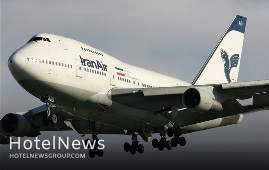
Iran has extended the ban on passenger flights to Britain until February 19 due to the spread of a new variant of the coronavirus, the Civil Aviation Organization of Iran announced. According to a statement by CAO on Saturday, the flights to and from the UK will remain suspended for another month, due to the new Covid-19 strain that is spreading rapidly in that country, Mehr reported. The measure was initially enforced on Dec. 22, 2020, for a fortnight at the request of the Health Ministry and the National Coronavirus Headquarters. The statement adds that in addition to the cancellations, the connection flights from other countries, especially European countries, have been completely restricted and controlled, and these restrictions continue until further notice. It is also specified that countries such as Japan, Zimbabwe, Namibia, Angola, Mozambique, Malawi, and several other countries where alarming mutant variants were reported as of January 21 were also subject to strict health laws, and those visiting or residing in such countries within the past two weeks were also banned from entering Iran.
Create: Feb 8, 2021 Edit: Feb 8, 2021 Regional News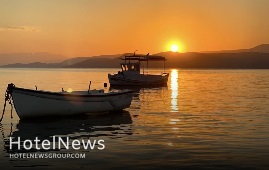
Greek Prime Minister Kyriakos Mitsotakis forecast a strong rebound in tourism in the summer of 2021, saying speedy vaccination drives in key markets for Greece, including Britain and Israel, will pave the way for tourists to return despite the current industry’s gloom, according to a report out of Reuters on Thursday. Tourism, which accounts for about 20 percent of the Greek economy and directly employs one in five workers, collapsed last year as the coronavirus pandemic sent its revenues slumping to 4 billion euros from a high of 18 billion in 2019, according to the report. Since last summer, when the pandemic subsided across Europe, the virus has surged once again, triggering renewed lockdowns and travel restrictions and pushing the region’s death toll above 750,000. Vaccines are now making their way through the most critical populations but the supply is lagging all over the world. “I am a realist, but I am also cautiously optimistic that we will do much better than last year,” Mitsotakis told Reuters. The Prime Minister also defended a decision to coordinate EU member states’ vaccine purchases through the European Commission, saying the bloc’s smaller countries would have faced serious problems negotiating deals on their own.
Create: Feb 5, 2021 Edit: Feb 5, 2021 International News
The first-ever hotel in the city of Rey, southeast of Tehran, was inaugurated on Tuesday on the occasion of Ten-Day Dawn (Jan. 31- Feb. 10, marking the victory anniversary of the Islamic Revolution), ISNA reported. The inauguration ceremony was attended by Mohammad Mohammadi Reyshahri, the custodian of the Holy Shrine of Shah Abdol Azim, and Anushiravan Mohseni Bandpey, the governor-general of Tehran province, and several local officials and tourism insiders. A budget of 800 billion rials (about $19 million at the official exchange rate of 42,000 rials per dollar) has been allocated to the project which adds 42 rooms and 108 beds to the hospitality sector of the city, the provincial tourism chief Parham Janfeshan announced on the sidelines of the ceremony. The construction and inauguration of this hotel will lead to the development of religious tourism infrastructure in the city, which will bring more welfare to the pilgrims of the Holy Shrine of Shah Abdol Azim, Janfeshan said. Construction work of the hotel took four years in a piece of land covering more than eight hectares, he added. The history of settlement in Rey dates from the 3rd millennium BC. It is featured in the Avesta (the original document of Zoroastrianism, an Iranian religion) as a sacred place, and it is also mentioned in the book of Tobit, of the biblical Apocrypha, and by classical authors. According to Encyclopedia Britannica, Rey was one of the capital cities of the Parthian empire (3rd century BC–3rd century CE). It was captured by the Muslim Arabs in 641 CE. During the reign of the Muslim caliph al-Mahdi in the 8th century, the city grew in importance until it was rivaled in western Asia only by Damascus and Baghdad. Islamic writers described it as a city of extraordinary beauty, built largely of fired brick and brilliantly ornamented with blue faience (glazed earthenware). It continued to be an important city and was briefly a capital under the rule of the Seljuqs, but in the 12th century, it was weakened by the fierce quarrels of rival religious sects. In 1220 the city was almost entirely destroyed by the Mongols, and its inhabitants were massacred. Most of the survivors of the massacre moved to nearby Tehran, and the deserted remnants of Rey soon fell into complete ruin. Rey, however, retains enough history to give it a different sensibility, its key sight is the elaborately decorated Shah Abdol Azim Shrine. Beside the shrine complex is a lively bazaar, while further afield are a couple of minor historical attractions.
Create: Feb 5, 2021 Edit: Feb 6, 2021 Regional News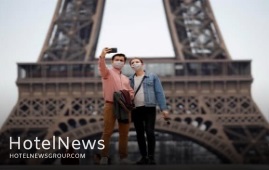
The coronavirus crisis cost the global tourism sector $1.3 trillion in lost revenue in 2020 as the number of people traveling plunged, the UN said, calling it "the worst year in tourism history". Revenue lost last year amounted to "more than 11 times the loss recorded during the 2009 global economic crisis," the Madrid-based UN World Tourism Organization (UNWTO) said in a statement, warning that between 100 million and 120 million direct tourism jobs were at risk, AFP reported. International tourist arrivals fell by one billion, or 74 percent, in 2020 with Asia, the first region to feel the impact of COVID-19, seeing the steepest decline, it added. "While much has been made in making safe international travel a possibility, we are aware that the crisis is far from over," UNWTO head Zurab Pololikashvili said in the statement. The rollout of COVID-19 vaccines is expected to "slowly normalize travel" in 2021 but many countries are reintroducing travel restrictions such as quarantines, mandatory testing and border closures "due to the evolving nature of the pandemic", the body said. The Asia and Pacific region recorded an 84 percent drop in arrivals. It was followed by Africa and the Middle East with a 75 percent drop, Europe with 70 percent fewer visitors "despite a small and short-lived revival in the summer" and the Americas where arrivals fell by 69 percent. International tourism arrivals rose by four percent in 2019 to 1.5 billion, with France the world's most visited country, followed by Spain and the US. The last time international tourist arrivals posted an annual decline was in 2009 when the global economic crisis led to a four percent drop. The UNWTO said most experts do not see a return to pre-pandemic levels of tourism activity before 2023. Open-air and nature-based tourism will see growing demand when tourism restarts, with domestic tourism also expected to be more popular, the body said. While international tourism has taken a hit from the outbreak of disease in the past, the coronavirus is unprecedented in its geographical spread. By comparison, international tourism arrivals fell by just 0.4 percent in 2003 after the outbreak of Severe Acute Respiratory Syndrome (SARS) which killed 774 people worldwide. The coronavirus has killed at least 2,176,000 people since the outbreak emerged in China in December 2019, according to a tally from official sources compiled by AFP. The tourism industry accounts for about 10 percent of the world's gross domestic product (GDP) and jobs.
Create: Feb 3, 2021 Edit: Feb 3, 2021 International News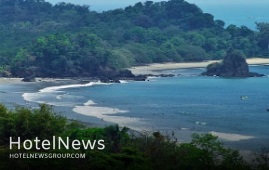
Tourism to Costa Rica will likely stagnate this year at the sharply reduced levels of 2020 because of the COVID-19 pandemic, weighing on the economy of the Central American country, a top government official said. Tourism Minister Gustavo Segura said Costa Rica will in 2021 probably receive about one-third of the 3,139,000 international tourists it had in 2019, on a par with last year, when some 1,011,000 foreign visitors arrived, official data shows, Reuters reported. In an interview, Segura said around 75,000 tourists came to Costa Rica in December, down from 327,000 a year earlier, underlining the challenge facing the popular tourist destination and the industry as a whole in Latin America. “Though the figures are better than those of some competitor nations, many companies can’t get going again,” Segura told Reuters, noting that the extent of recovery would depend on how the pandemic developed and how vaccination efforts progressed. Battered by the loss of tourists, the Costa Rican hotel and restaurant trade shrank by 40% last year, the central bank said. In 2019, tourism represented 8.5% of gross domestic product and 9% of formal jobs in the country of 5 million people. Segura projected that in 2021 it will only be worth around 3.5% of GDP and that the industry will shed about half the employment it generated, or about 100,000 jobs. The minister was hopeful that Costa Rica’s focus on nature tourism would reduce some of the attendant risk with people being outdoors. He also pointed to the fact the country’s health system had managed to avoid saturating its hospitals. Costa Rica has to date registered 193,276 infections and 2,604 deaths linked to COVID-19.
Create: Feb 3, 2021 Edit: Feb 3, 2021 International News
